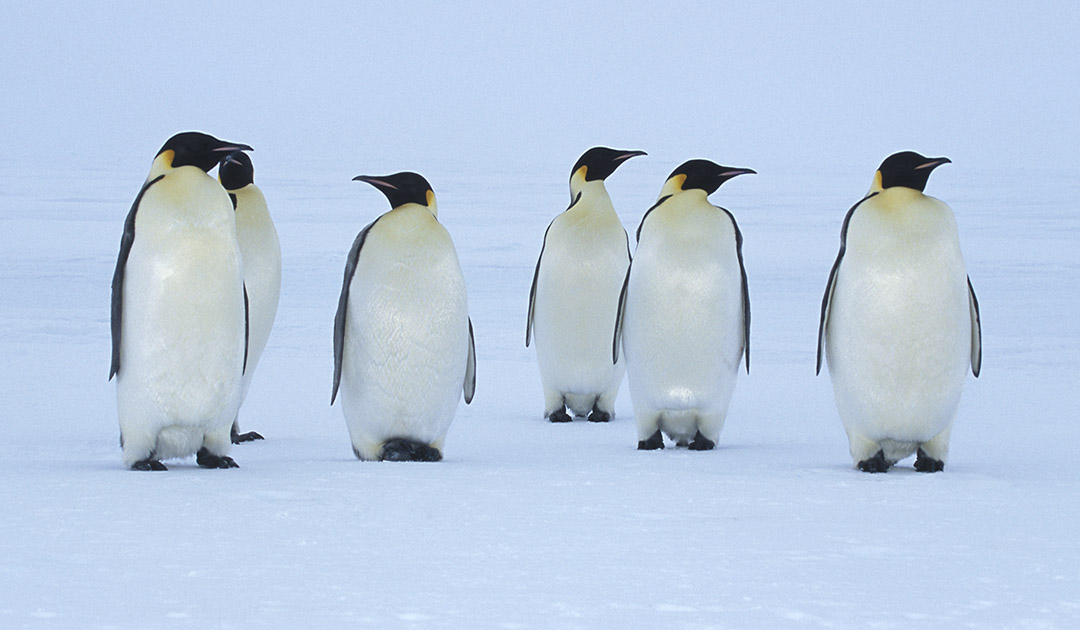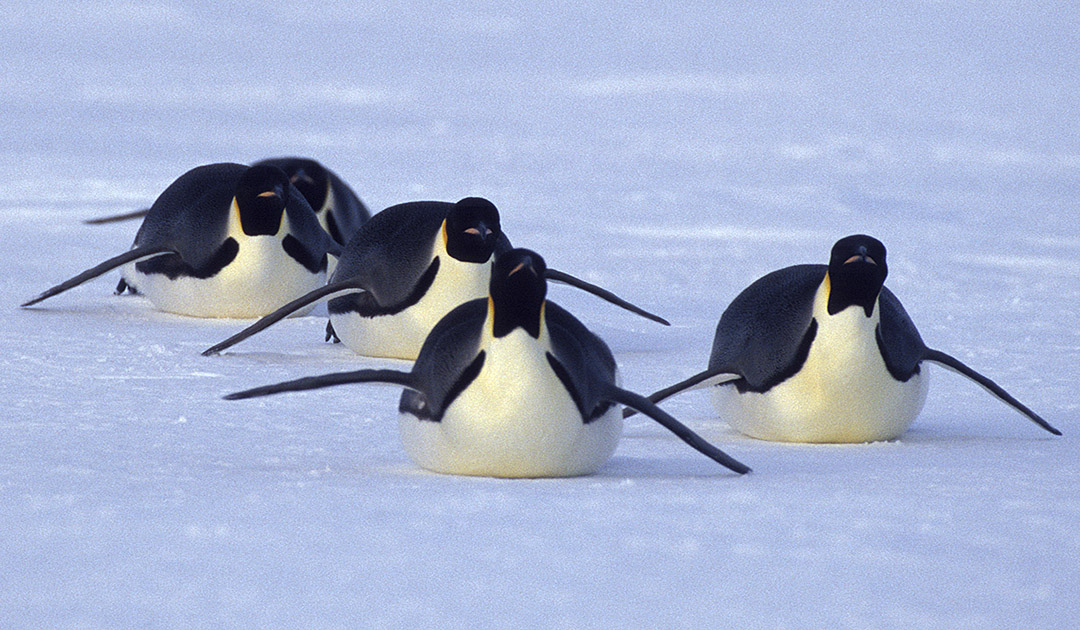
Habitat
The emperor penguin lives and breeds exclusively on the edge of Antarctica between the 66. and 78. latitudes. During their “oceanic phase”, emperor penguins migrate to the area of the pack ice belt. When fishing, they can dive under the ice down to 500 meters and stay underwater for more than a quarter of an hour.

Breeding behaviour
Emperor penguins start breeding between the ages of 3 and 6. It is one of the most unusual curiosities of nature that the emperor penguins not only breed in the coldest area of the earth, but also do so in winter instead of summer. At the beginning of April, the emperor penguins migrate inland, after they have fed themselves under the pack ice. Now the mating season begins, and in May/June, in the middle of the Antarctic winter, they start breeding.
The emperor penguin female lays only one white egg, which weighs about 450 grams. After the laying the egg, the female hands over her egg to the male. The females now leave the colony and return to the sea to put on fat for the turnover during breeding and gather the first proper meal for the chick. Long distances are usually covered by sliding on their belly. The distance to the ice edge can be up to several hundred kilometers at this time.

While the females forage, the males hatch the egg in their warm breeding pouch. A colony of breeding males can range between a few dozen to a few thousand animals. Because the emperor penguin males do not feed during the two-month breeding phase, they lose up to half their body weight during this time. In order to keep warm, the animals in the colony gather close together and change their position regularly, so that each animal stands at the edge and sometimes in the warmer interior of the colony. This happens during the polar nights, which are brightened at most by some aurora. The temperature ranges from minus 60 to minus 70 degrees and at times, furious snowstorms sweep across the ice.

After 64 days, the chick hatches and is fed by the father for the time being with a crop secretion. Now finally, the female returns, after having traversed the long distance “land road” again. The well-fed mother, who carries about 3 kilograms of pre-digested fish in her stomach, can feed the chick for two to three weeks. The father, meanwhile, marches with all the other emaciated males to the sea to dive under the pack ice for food.

Now the time for joint feeding begins. While one parent hunts, the other is busy feeding the chick. On average, each parent animal migrates eight times to the sea and back again, so that the chick is fed 16 times. Feeding takes place in several stages, spread over two to three days. At the age of five to seven weeks, the chicks begin to gather in the so-called crèches. All chicks stand close together to protect themselves from the cold and storm. Due to the long way of the parents to the sea and back, the chicks always have three to four food-free days.

Selfsustaining foraging
As expensive as it is to provide food for the parents, it brings a decisive advantage for the chicks: in November, at the start of the Antarctic summer, the hunger of the chicks far exceeds the amount of fish that the parents can bring. But thanks to the sun, the ice has broken up over long distances, so the way to the sea is not far. For the parents, the distance over the ice is getting shorter and shorter.
When summer starts, the young emperors finish their molting phase and leave the colony to begin their wandering years. Three to six years later, they will return to their birthplace and breed for the first time.
The emperor penguins manage to breed with this rhythm every year. Their closest relatives, the king penguins have only two breeding phases in three years.

Energy-saving world champion
The penguins have a thick layer of fat in their subcutaneous part of the skin, the blubber, which reduces heat loss to a minimum. When they breed during the Antarctic winter, stormy winds will drop temperatures to minus 60 degrees. But within their body, the penguins can maintain plus 39 degrees Celsius. The temperature difference between inside and outside is therefore a whopping 100 degrees Celsius. Emperor penguins are true energy-saving world champions!
Heiner Kubny, PolarJournal (text + images)





